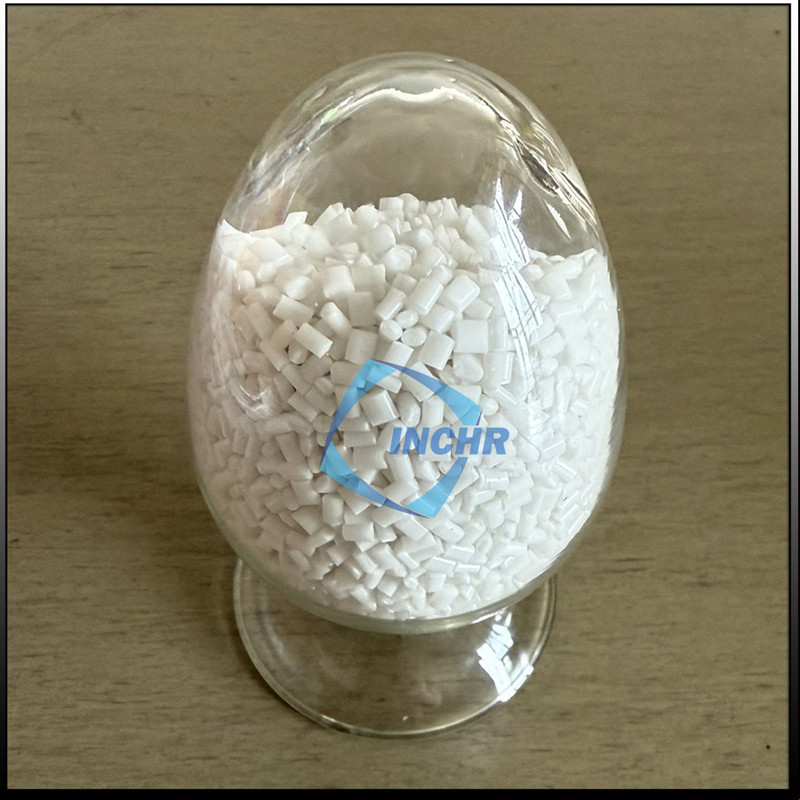Introduction: The Growing Importance of Anti Block Masterbatch
In an era where plastic films are expected to be thinner, stronger, and more eco-friendly, anti block masterbatch has emerged as a cornerstone of modern manufacturing. This specialized additive prevents film layers from adhering during production, storage, or transport—reducing waste, improving efficiency, and ensuring product quality. From food packaging to industrial applications, its impact is transformative.

How Anti Block Masterbatch Works: Precision Engineering
Anti block masterbatch integrates microscopic particles (e.g., silica, talc, or synthetic compounds) into polymer resins. These particles create a controlled surface texture through three key mechanisms:
Surface Roughening: Generates micro-scale irregularities to prevent adhesion.
Friction Reduction: Lowers the coefficient of friction (COF) for smoother processing.
Optical Clarity Maintenance: Minimizes haze in transparent films.
Technical Insights:
Particle Size: 1–10 µm (smaller for ultra-thin films, larger for heavy-duty uses).
Loading Rate: 1–5% by weight, tailored to resin type (e.g., LDPE, PP, PLA).
Thermal Stability: Withstands extrusion temperatures up to 260°C.
Industry-Specific Applications Driving Innovation
1. Food Packaging
Prevents vacuum-sealed films from sticking, reducing production waste by 25%.
Compliant with FDA, EU 10/2011, and GB 9685 standards for direct food contact.
2. Agricultural Films
Ensures greenhouse films remain separated while optimizing light diffusion for crop growth.
UV-resistant grades extend film lifespan by 3+ years in harsh climates.
3. Medical Films
Maintains sterility in IV bags and pharmaceutical packaging.
Passes ISO 10993-5 cytotoxicity and USP Class VI safety tests.
4. Industrial Stretch Films
Enhances pallet-wrapping efficiency with a COF range of 0.3–0.5.
5. Biodegradable Films
Compatible with compostable resins (PLA/PBAT) and post-consumer recycled (PCR) materials.
Selecting the Right Anti Block Masterbatch: A 5-Step Framework
Resin Compatibility
Match the masterbatch to your base polymer (e.g., LLDPE for stretch films, PLA for compostables).
Particle Characteristics
Spherical silica ensures clarity; talc offers cost efficiency for opaque films.
Regulatory Compliance
Verify certifications (FDA, REACH) for food or medical applications.
Sustainability Goals
Opt for bio-based silica (rice husk ash) or PCR-compatible formulas.
Supplier Expertise
Partner with providers offering technical trials and custom formulations.
Sustainable Innovations: Leading the Green Revolution
The industry is advancing eco-friendly solutions without compromising performance:
Bio-Silica from Agricultural Waste: Reduces reliance on mined silica by 50%.
Chemical Recycling Compatibility: Additives survive multiple recycling cycles.
Low-Migration Formulas: Meet EU’s PPWR and U.S. EPA leaching limits.
Case Study: A German manufacturer cut carbon emissions by 35% using rice husk-based masterbatches in food packaging.
Avoiding Costly Errors: 3 Critical Mistakes
Overloading Additives
Excess particles (>5%) increase haze and reduce tensile strength.
Ignoring Storage Conditions
Moisture absorption degrades performance—store at <50% relative humidity.
Using Generic Formulas
High-speed cast films require finer particles than blown films.
Future Trends: Smart Technologies Redefining the Industry
AI-Powered Dispersion Systems
Machine learning optimizes particle distribution, reducing defects by 40%.
IoT-Enabled Production
Sensors adjust dosing based on real-time resin viscosity and temperature data.
Self-Regulating Additives
“Smart” particles adapt surface texture to environmental conditions.
FAQs: Addressing Key Industry Concerns
Q: Can anti block masterbatch replace slip agents?
A: Hybrid grades reduce COF effectively, but ultra-low friction (<0.2) requires specialized slip additives.
Q: How does film thickness impact additive choice?
A: Films <15µm need nano-silica (1–3µm particles); thicker films (>30µm) use talc blends.
Q: What’s the ROI of premium anti block masterbatches?
A: Manufacturers report 20–35% waste reduction and 15% faster line speeds, yielding ROI in <6 months.
Why Collaboration with Experts is Essential
Top suppliers deliver:
Custom Solutions: Tailored to your equipment, resin, and end-use needs.
Regulatory Navigation: Expertise in global standards (FDA, REACH, ISO).
R&D Innovation: Co-development of bio-based or multi-functional additives.
Conclusion: Elevating Efficiency and Sustainability
Anti block masterbatch is no longer just an additive—it’s a strategic tool for manufacturers aiming to lead in quality, efficiency, and environmental responsibility. By adopting advanced formulations and embracing trends like AI and circular production, businesses can achieve unparalleled performance. Partner with innovators who prioritize technical excellence and sustainability to unlock the full potential of your plastic films.




